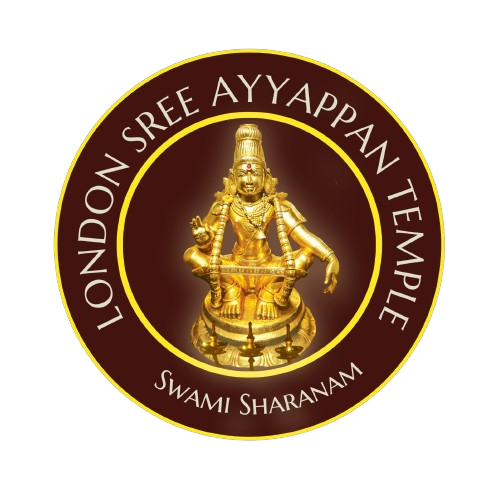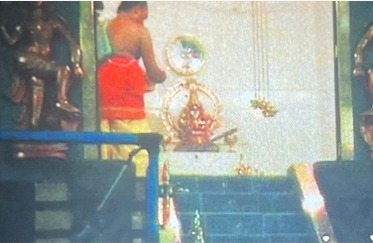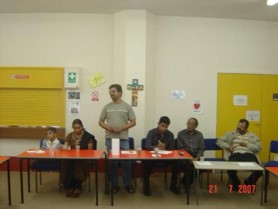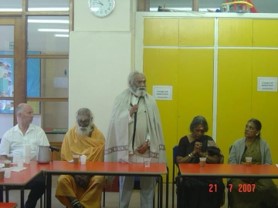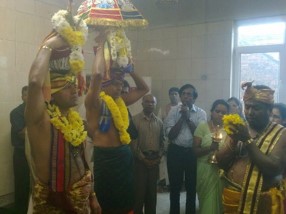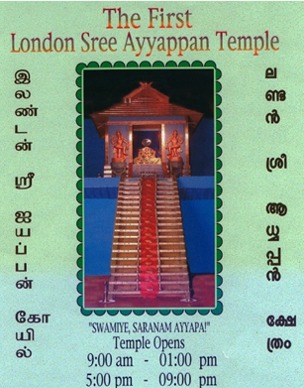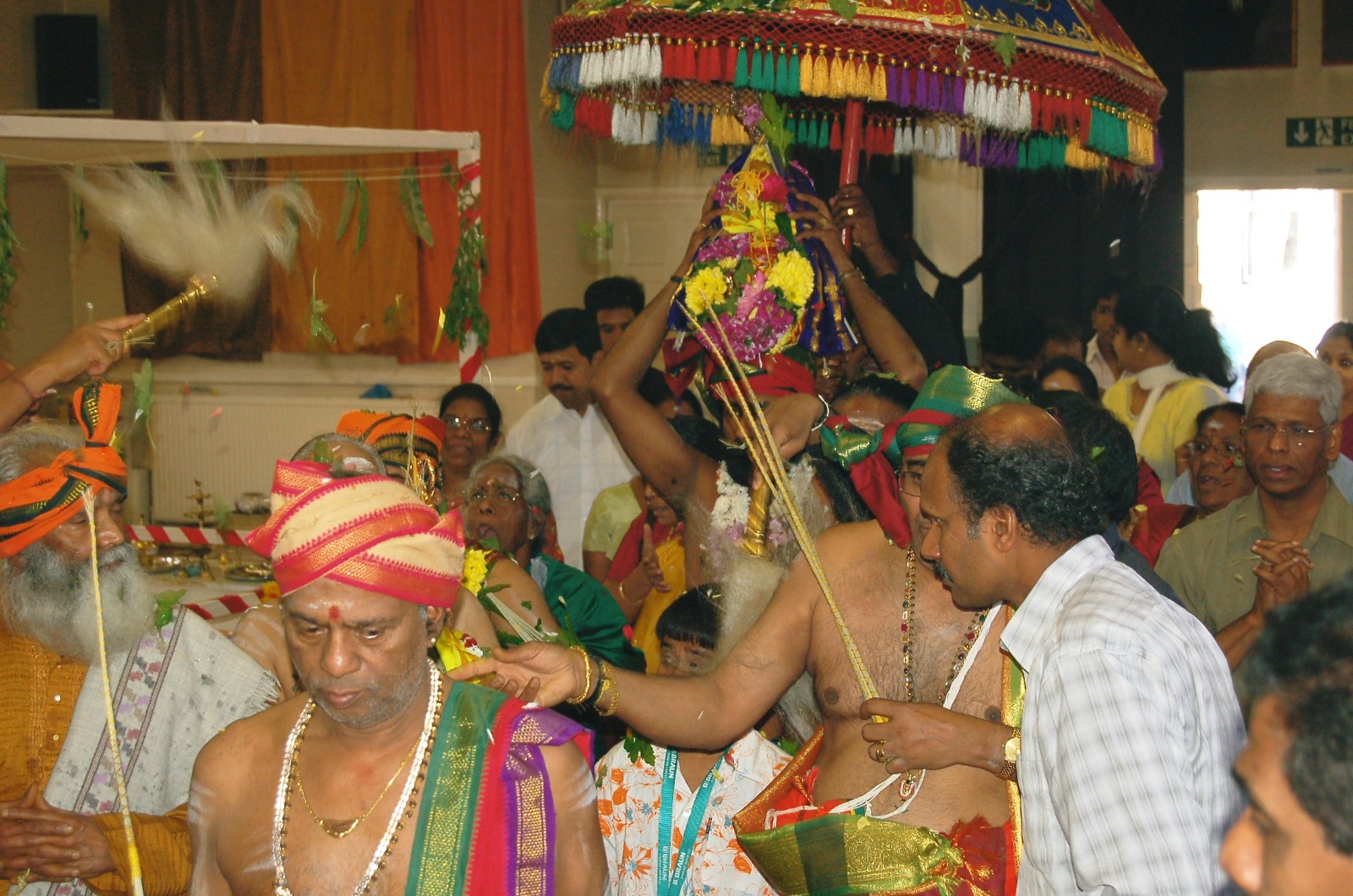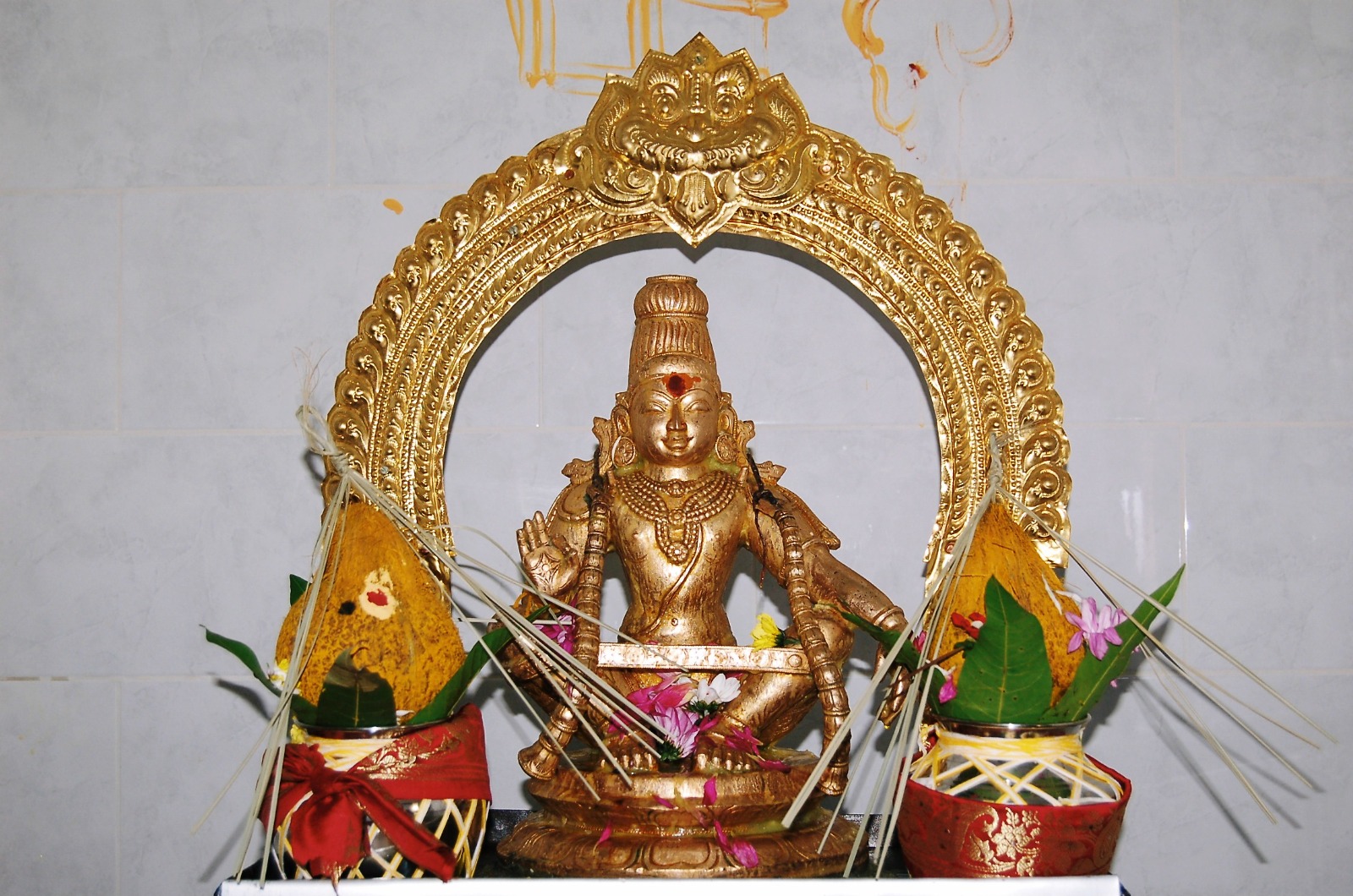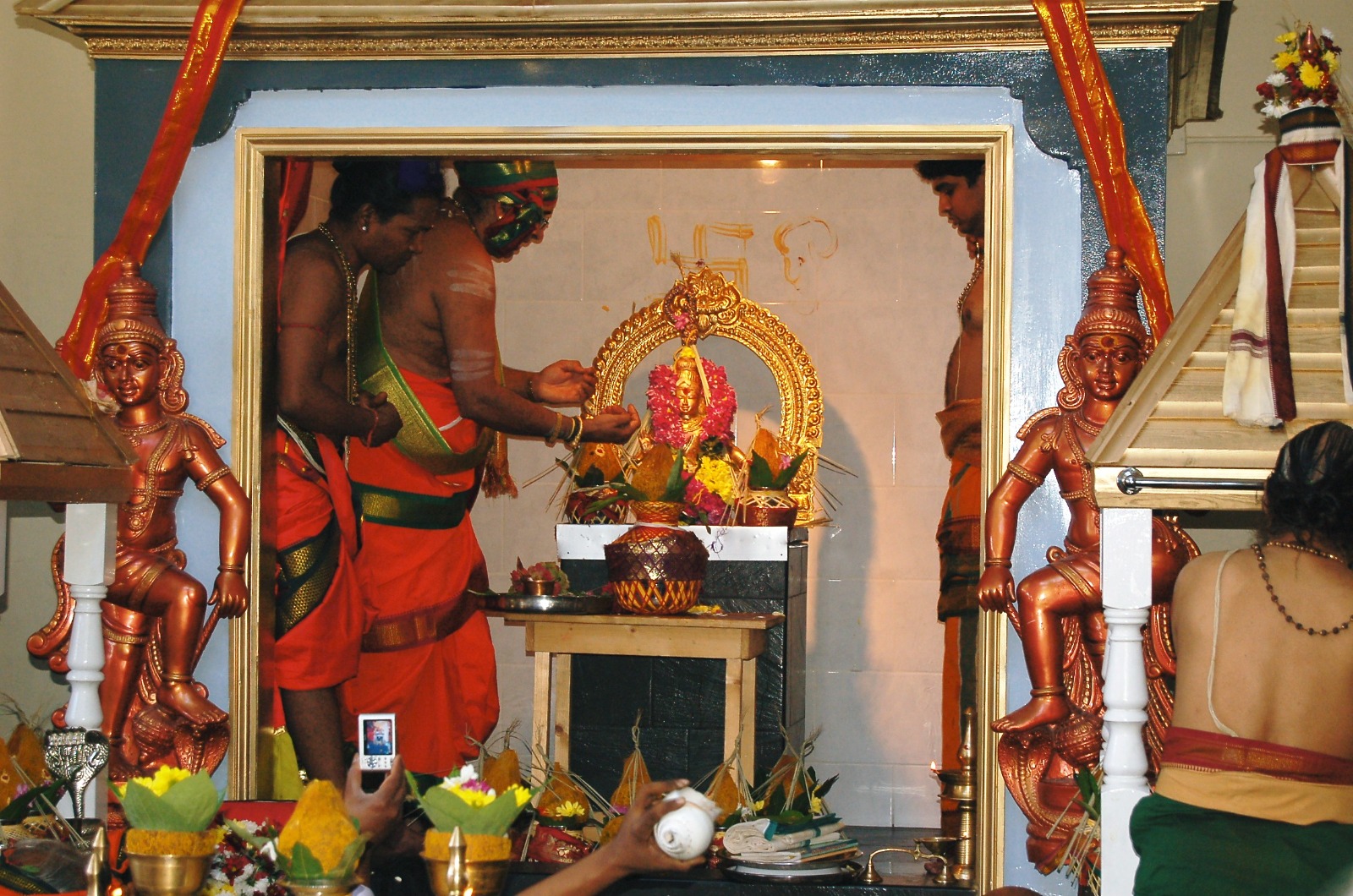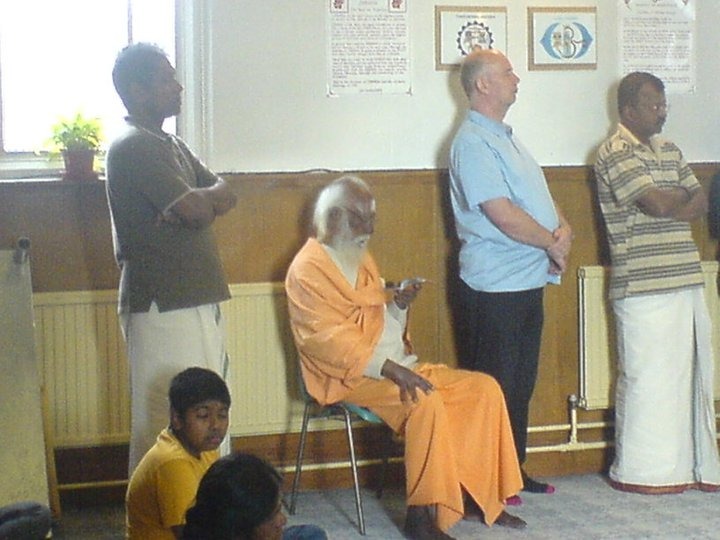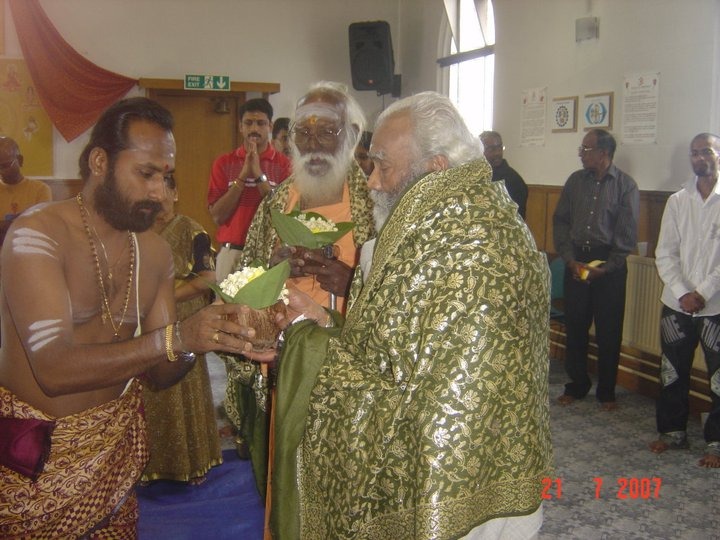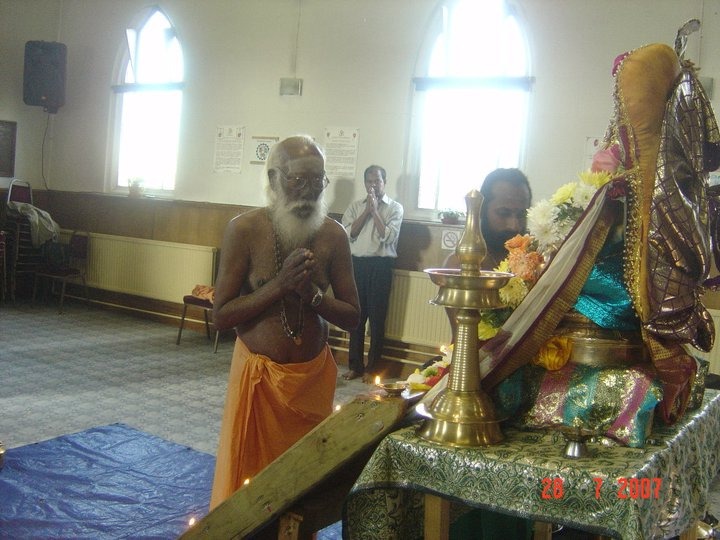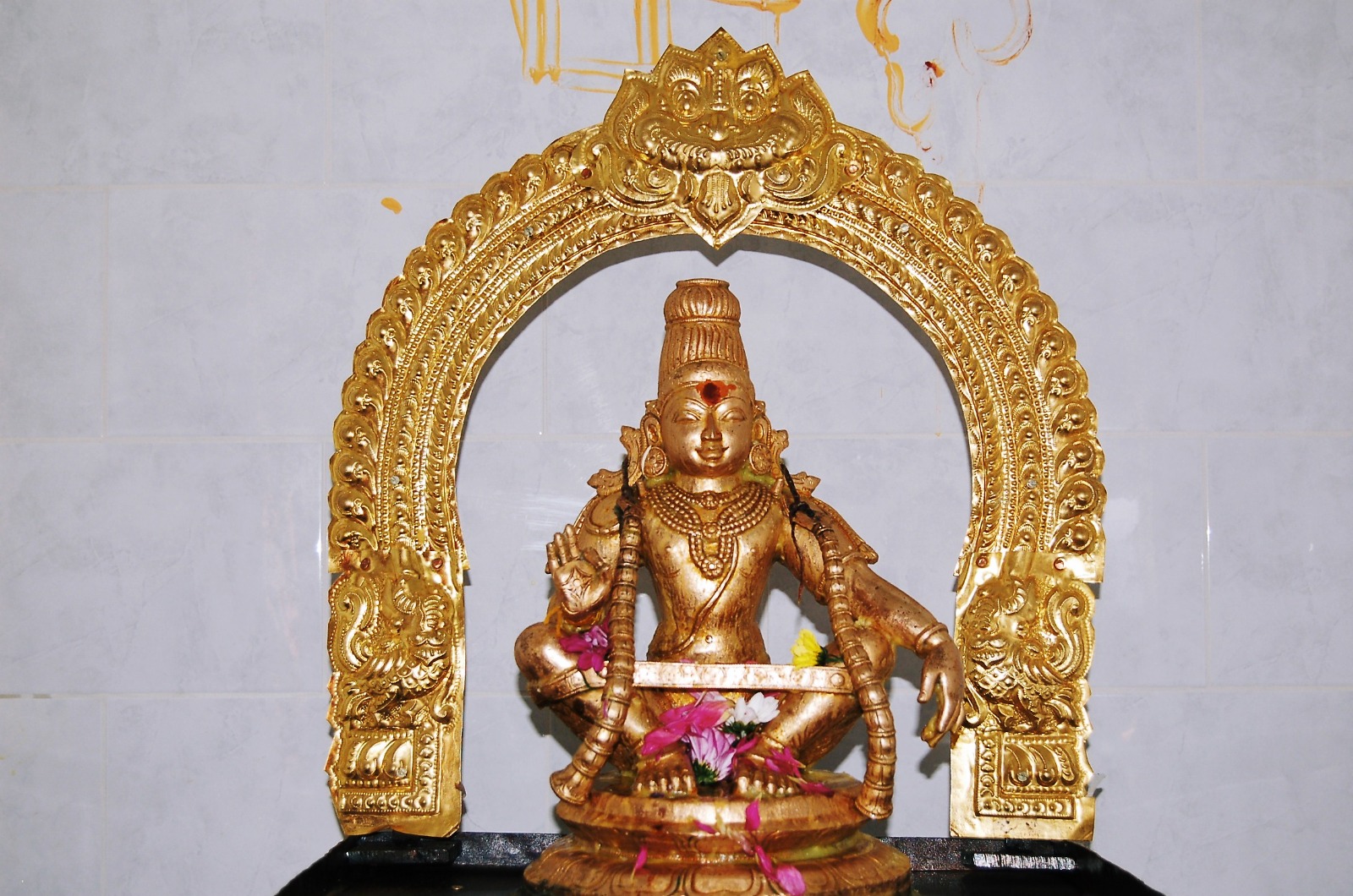About us
Home / About
about
learn aboout Ayyappa
teaching
History of Lord London AYYAPPA
The year 1980 witnessed the worship of Lord Ayyappa being introduced in the UK, and one of the first to establish this was His Grace Gurusamy Late Kollam P. Sreedharan in the abode of Lord Murugan Temple located in Eastham, London. Gurusamy's aspiration to engage everyone in daily bhajans led to the initiation of the Mandala Thiruvizha, starting on Boxing Day, annually observed with support from the Chief Priest of Murugan Temple, Siva Sri Kailai R. Naganathasivam. To fund this unprecedented event in London, contributions were gathered from devotees, uniting local residents in worship of Lord Ayyappa.
The Sree Ayyappa Seva Sangam emerged from this momentum, aiming to serve devotees gathering in Lord Ayyappa's name. His Holiness Swamiji Krishnan Sreedharan, a sannyasi siddhar hailing from Edava, Kerala, had also conceptualized the idea of building a proper temple anywhere in London to accommodate Ayyappa devotees from all over the UK. He had blessed his disciples in the Seva Sangam to carry out this work. Arriving in the UK, Swamiji wanted to meet P. Sreedharan Guruswami to Ayyappan community. Upon meeting Guruswami, they realised that they were good friends in Swamijis pūrvāśrama early days in Singapore. He encouraged and blessed P. Sreedharan Guruswami to start regular worship and bhajans for Ayyappan. Monthly pujas commenced at Kensington Primary School, supported by trustees and devotees. In the late 1990s and early 2000s, the ‘Sree Ayyappa Seva Sangam (London)’ experienced a large volume of devotees, and in order to accommodate them, the Seva Sangam ardently sought to build a separate temple for Lord Ayyappa near Eastham. Despite their hard efforts and lack of amenities, they couldn’t find a building near the place.
Subsequently, the temple was built in East Acton with grandeur. Sree Ayyappa manifested into a divine panchaloha vigraha, and the temple construct was well-crafted with 18 divine steps. Unfortunately, due to some hassles, the Seva Sangam was left with no option other than to vacate the place within a few months, and the deity was moved to an ashram-temple located in Harrow.
Due to many obstacles in the path of creating a permanent abode for Ayyappan, His Holiness Swamiji Krishnan Sreedharan flew from India, even in old age, to give his blessing and guide the way. This would be his last visit to the UK. Arriving in the UK in 2007, Swamiji met with trustee Late Vijayan. Together, along with Kiri Swami, the trustees, and P. Sreedharan Guruswami, a meeting was organized to discuss the future of the Sangam. This meeting laid the foundation of the London Ayyappan Temple. During this meeting, P. Sreedharan Guruswami entrusted the Sree Ayyappan Seva Sangam to Swamiji and requested him to establish the temple anywhere in London.
Along with Swamiji and Guruswami, Kiri
Swami visited many potential properties. However, all of them had various
issues and were unsuitable for temple purposes. Finally, they came across a
property on Masons Avenue, Harrow, London. This property naturally had 18 steps
leading up to the first floor of the building, which would later become the
temple. Thus, the London Ayyappan Temple was established, with its consecration
(kumbhabhishekam) performed on the 14th of September 2008. The temple was built
as a mini replica of Sabarimala, with Ganapati, Shiva, and other deities
consecrated as well.
On the 22nd of August 2010, two more
shrines were consecrated along with the replacement of the panchaloha
(five-metals) Ganapati deity with a permanent granite deity and Sri
Venketeswara, a form of Vishnu. Utsava murtis in panchaloha for Lord Ayyappa, Lord
Anjaneya, and Dakshinamurti were consecrated a few days later.
There is a spacious and well-ventilated auditorium of about 3600 square feet located on the ground floor of the temple, named after the building's original name, Brotherhood Hall. It is used for conducting spiritual and cultural programmes, marriages, and discourses, as well as local and community programmes. Discourses by eminent speakers on religious and spiritual topics are held regularly. These discourses help in spreading the message of universal brotherhood and love among the public. For the benefit of devotees participating in discourses, daily rituals, etc., and for the employees and volunteers, there is a large kitchen and a dining hall on the ground floor of the temple premises.
The temple attracts a large number of devotees throughout the year. During the Mandalam/Makaravilakku (November to January) season, hundreds of Ayyappa devotees’ throng to the temple for Darshana, Maladharanam, and Kettunira with the blessings of the Guruswami, Kiri Guruswami, and the temple priests: Sivabalasubramaniam Kurukal, Pushparaja Kurukal, and recently Venkataramanan Kurukal, among other past priests. The temple is acclaimed as one of the well-maintained ones in Harrow Council, London. Indeed, it is a Mahakshetra in all respects.
Suntharampillai
Kirubahar (Kiriji)
Founder,
Member, Patron, Trustee and Gurusamy
London Ayyappan Temple
